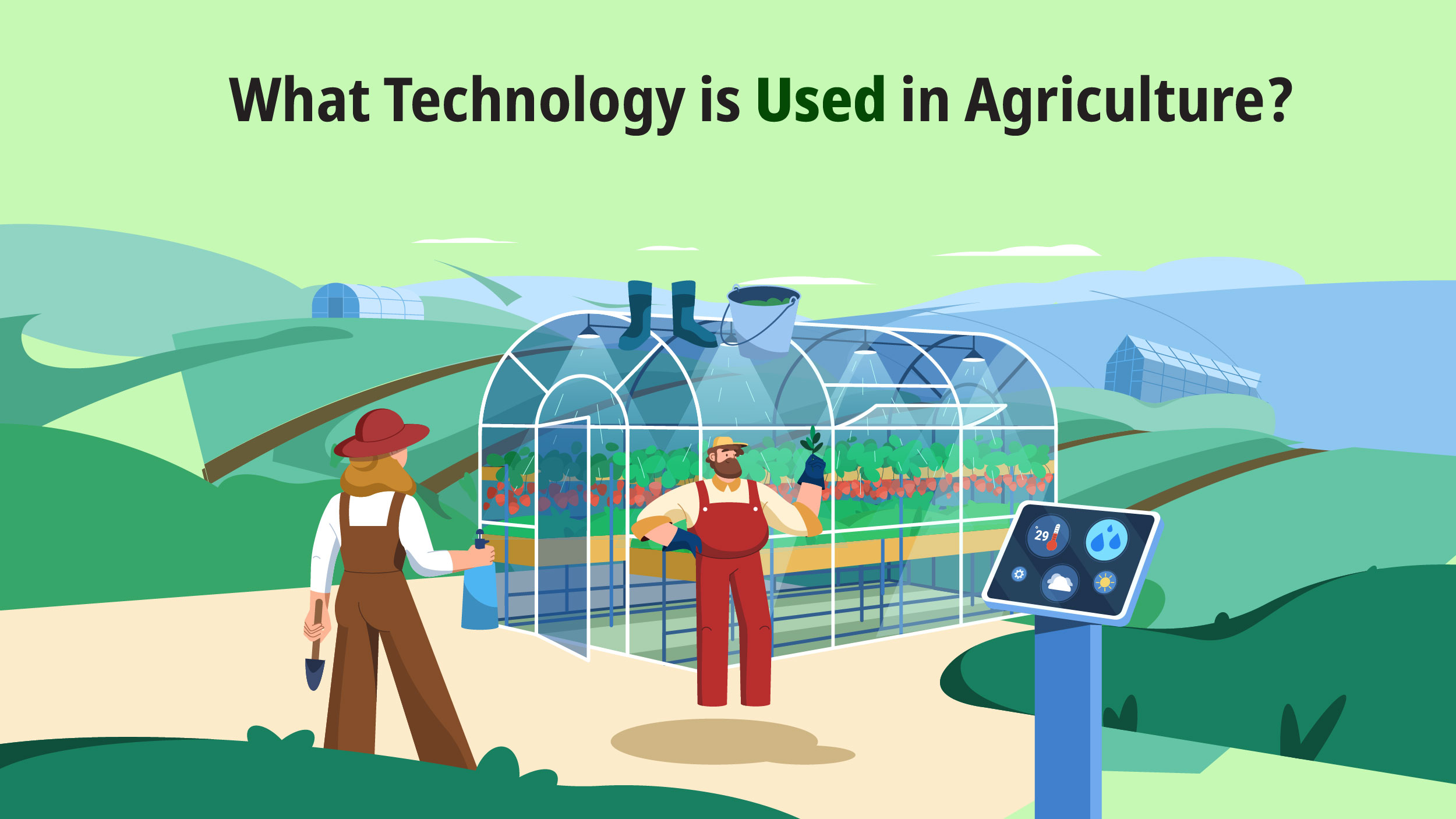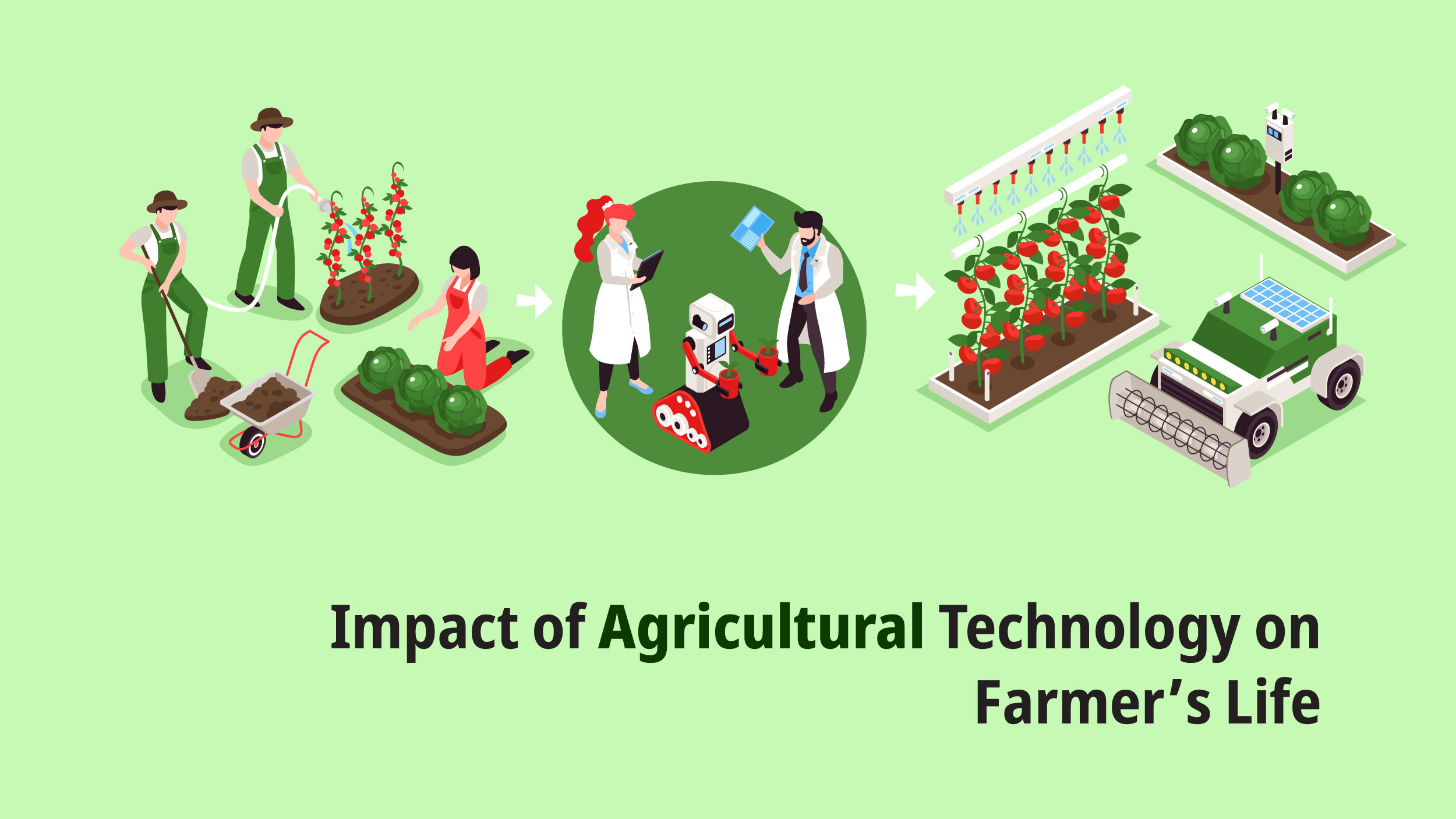The industrial revolution witnessed the emergence of machinery to significantly increase crop and animal yields, which ultimately gave rise to agricultural technology. As a highly preferred method to mitigate the effects of the world’s rapidly growing population—which is estimated to hit 9.7 billion by 2050—it has emerged as one of the greatest technological achievements in human history over time. Using machinery, AI, and other types of technology directly to agriculture and related industries in order to increase sustainability is known as agricultural technology.
Let’s learn more about these technologies in this article.
What is Agricultural Technology?
Agricultural technology, commonly referred to as agritech or agtech, is the term used to describe the fusion of technological advancements with farming to boost agricultural productivity. It uses technology to build and design equipment that optimizes every step of planting and raising animals for the benefit of the consumer while requiring minimal resources to boost yields and profitability.
Importance of Agricultural Technology
As the global population is expanding significantly, the requirement for food is likely to surge by 70% by the year 2050. As evidenced by UN figures showing that 9.9% of the world’s population still experiences hunger, meeting the dietary needs of almost 10 billion people poses a major obstacle. Farmers must rely on agricultural technological innovation since environmental changes are unpredictable.
Agritech helps farmers overcome operational obstacles like funding, supply, and crop yield. Farmers can guarantee safer growing conditions, boost overall productivity, and lessen their influence on natural ecosystems with the use of agritech. They can increase consumer access to safer foods on the market.
Moreover, farmers benefit from lower costs, higher productivity, and better worker facilities thanks to agritech. For instance, agritech is responsible for the application of biotechnology to create robust crops and artificial intelligence to forecast the climate and weather. Similar to this, agricultural sensors are some important technologies that are essential to farmers’ livelihoods.
Also Read: What is Agritech and Why Is It Important for Modern Agriculture?
What Technology is Used in Agriculture?

The emergence of cutting-edge technologies, along with modern farming techniques are revolutionizing the agricultural environment into one that is sustainable, data-driven, and highly efficient. Listed below are some of the examples of technologies reshaping the landscape of farming.
-
AI and ML
Agriculture is emerging into a data-driven sector, largely attributable to the growing integration of AI and machine intelligence. With the help of these tools, farmers can analyze large datasets containing information on soil conditions, weather patterns, and overall crop health. AI technologies can process this data and deliver farmers tips and insights in real-time.
AI in agriculture offers advantages beyond better resource management. Artificial intelligence automates various operations like harvesting and weeding, suggesting appropriate irrigation regimens, and optimizing planting schedules according to weather forecasts. AI systems are expected to contribute substantially to the expansion of the agriculture sector due to their capability to learn and adapt more.
-
Precision Farming
The utilization of advanced technology in precision farming has led to a new level of accuracy in farming. Digitalization has emerged as a significant trend in the farming sector. This trend is further fueled by the growing use of drones, sensors, and GPS-guided tractors. These tools have made data-driven decision-making possible for farmers. GPS-guided tractors, for example, are capable of following pre-programmed courses to the exact millimeter aiming to maximize fertilization, plating, and harvesting activities. By harnessing the potential of sensors that examine soil conditions, farmers are increasingly tailoring their irrigation and fertilization plans to cater to the unique requirements of each crop.
Precision farming comes with several advantages. By carefully directing inputs, it minimizes resource waste, which has positive effects on the environment and lowers costs. Farmers can avoid output losses by identifying and addressing problems early on by using real-time crop health monitoring. In the end, precision farming maximizes yields while lowering the possibility of losing biodiversity.
-
Robotics and Automation
The rise of robots in agriculture has significantly replaced labor-intensive chores. Harvesters and autonomous tractors possess the capability to enhance planting and harvesting schedules by operating continuously.
Significant labor savings and a notable rise in uniformity of farming methods have been achieved through the utilization of robotics and automation technology. In addition to this, numerous agricultural robots available on the market collect crucial information on soil and crop conditions, which enables data-driven decision-making for better management of resources and crop health.
-
Sustainable Farming Practices
In agriculture, sustainability is now a need, not just the latest buzzword. Regenerative agriculture techniques prioritize restoring plant and soil health, cutting carbon emissions, and fostering biodiversity. Crop rotation, cover crops, and no-till farming—which minimizes soil disturbance—are essential elements of this approach.
In order to reduce environmental nutrient loss, biostimulants are essential for sustainable farming since they enhance nutrient uptake and stimulate natural plant processes. They boost plant resistance to abiotic stressors such salinity, heat, cold, and drought while also enhancing crop quality and production. For growers around the globe, this is crucial in light of the increasingly erratic global environment.
Impact of Agricultural Technology on Farmer’s Life

Agri-tech has enabled farmers to order agricultural inputs online via applications, thereby increasing their access to these resources. Additionally, it enables them to sell their produce directly to food processing firms, eliminating the need for middlemen and increasing profits.
An example of this may be found in the recent $14 million series D fundraising round raised by SaaS-based agri-tech startup CropIn. In short, agri-tech basically promotes the standard of living for most farmers, lowers the poverty rate, and creates jobs by contributing considerably to the economic growth of most developing economies.
In the year 2018, agriculture held more than 25% of GDP in underdeveloped countries. In addition, more jobs were generated to support the growing employment of consumers and farmers.
Agri-tech’s additional impacts on farmers’ lives include:
- improved communication and data availability among value chain participants.
- increased crop yields with the use of data analytics, machine learning, and artificial intelligence.
- reduced middlemen for better product pricing, improving farmers’ access to marketplaces and their direct connection to customers.
- boosting farmers’ creditworthiness to gain access to funding.
The Future of Agricultural Technology
The use of advanced technology to solve challenges related to sustainability, climate change, and food security is what agritech promises to bring to farming in the future. We can anticipate even more innovative concepts as technology develops further. Making judgments and predictions based on gathered data, AI and ML will become increasingly important. Utilizing blockchain technology in the supply chain will improve traceability and transparency, while advanced robotics will further automate farming methods.
Agritech’s significance extends beyond bettering agricultural methods. The need for food will rise in tandem with the world’s population growth. Technology in agriculture gives us the means to meet this expanding demand without depleting our natural resources.




